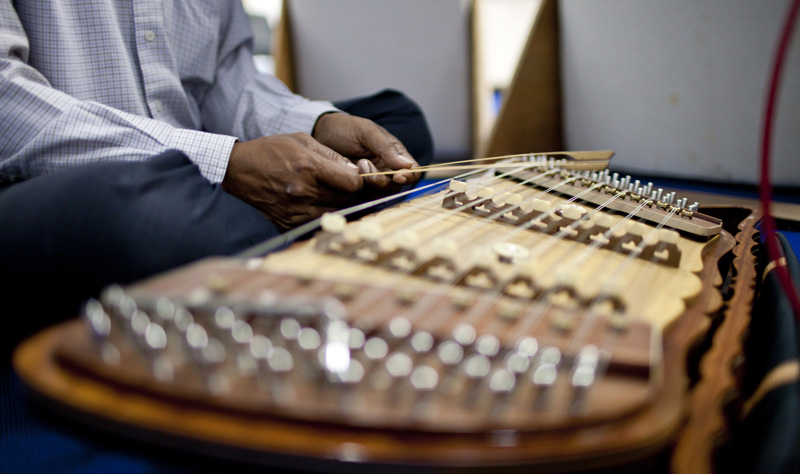 So this is it! This is literally ‘the sound of survival’. Even after decades of war and cultural destruction, during which traditional Cambodian music was banned and almost forgotten, ancient masterpieces are being resurrected on the newly released album Cambodian Forgotten Songs Vol. 2.
So this is it! This is literally ‘the sound of survival’. Even after decades of war and cultural destruction, during which traditional Cambodian music was banned and almost forgotten, ancient masterpieces are being resurrected on the newly released album Cambodian Forgotten Songs Vol. 2.
The story behind this revival starts with a purchase of an old book at a flea market in Paris. Chansons Cambodgiennes, written in 1921 by French academic Albert Tricon, contains the Western scores and phonetic lyrics of 54 Cambodian songs that were on the cusp of vanishing into the mists of time. After a journey to the other side of the world, the book eventually ended up at the Bophana Audiovisual Resource Centre in Phnom Penh.
The centre immediately set about singing and playing new life into this otherwise-at-risk-of-being-forgotten musical heritage, much of which had survived only as oral tradition. Supported by professional artists and music academics, the first CD of eight songs was released in 2009 and is now being followed up with a newly released second volume, also containing eight tracks. Although nobody can know for sure how the music was originally played, the recordings, say the good folk at Bophana, remain as close to traditional forms as possible.
The result is fascinating: a melodic combination of traditional Khmer instruments, vibrato vocals and poetic lyrics. Three different Khmer music styles are covered, all easily recognisable by the instruments and rhythms used. Mohori, commonly performed at banquets and folk dances, sounds almost Chinese influenced because of the huge part the roneat eik (‘bamboo piano’) plays. But the addition of flutes, drums and finger cymbals gives these love songs an exotic, optimistic tone. This is also represented by some feel-good lyrics: ‘My darling, I will take care of you’ from the song Mon; ‘Sleep deeply, my beloved/ Sleep on my lap’ from Sangsar (‘Sweetheart’).
The sound is very different from arak, which dates back to the days of animism. The lyrics of ‘spirit possession’ songs Khlong, Komréng and Dâmbang dèk are strongly determined by this ancient belief system in which mountains, trees and animals are worshipped as sentient beings. Knowing this, you could be forgiven for interpreting the ostensibly innocent lyrics about nature as sexually loaded come-ons. Take, for example, Dâmbang dèk: ‘Young grass, flat land / At the peak of the mountain / Eagles are crying…’ This ‘ancient rock ‘n’ roll’ is characterised by ever faster drum rolls to seduce the souls of the departed. The change of rhythm and repetitions of melodies are almost hypnotic, sucking you into the music in what feels like a fleeting possession. The final two tracks are popular Khmer traditional songs, oozing with fun. Indeed, Svai muy mek (‘Green frog’) will most likely make you hop up and down on the spot.
To make the album’s appeal as wide as possible, it comes with a booklet containing English-language translations of the lyrics, as well as full musical scores for each song. Even the technical difficulties involved are described in detail. Without this extra feature, the album should still be considered something of a national treasure. And luckily, even after two albums featuring 16 forgotten songs (both available from the Bophana Centre now on a donation basis), there are still 38 such songs left to unearth.
WHO: Cambodian musicians unearthing traditional songs of the past
WHAT: Cambodian Forgotten Songs Vol. 2
WHERE: Bophana Centre, #64 Street 200
WHEN: Now
WHY: Rediscover the beauty of Cambodia’s rich musical heritage
